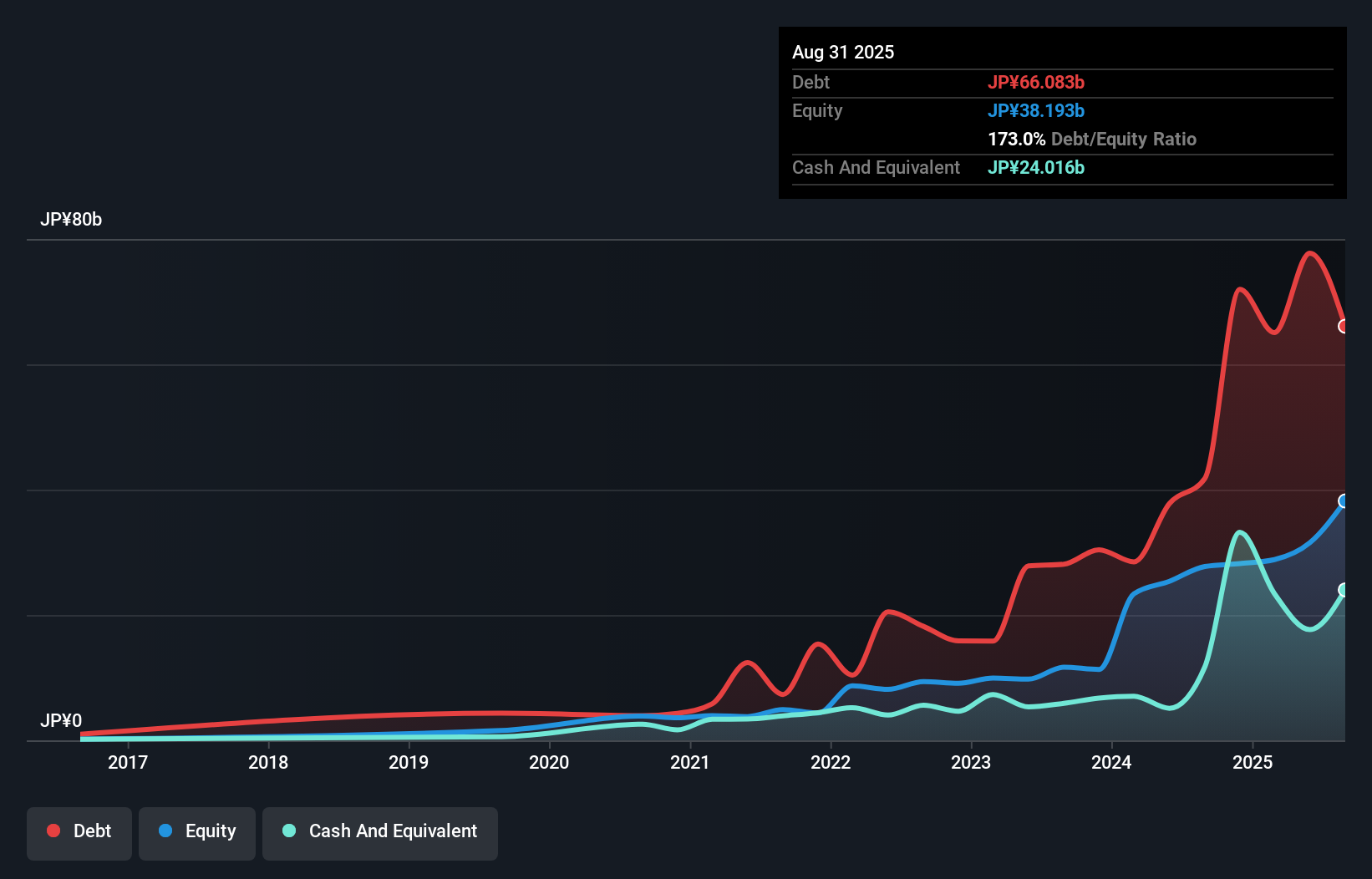The external fund manager backed by Berkshire Hathaway’s Charlie Munger, Li Lu, makes no bones about it when he says ‘The biggest investment risk is not the volatility of prices, but whether you will suffer a permanent loss of capital.’ It’s only natural to consider a company’s balance sheet when you examine how risky it is, since debt is often involved when a business collapses. We note that Kasumigaseki Capital Co.,Ltd. (TSE:3498) does have debt on its balance sheet. But should shareholders be worried about its use of debt?
We’ve found 21 US stocks that are forecast to pay a dividend yield of over 6% next year. See the full list for free.
When Is Debt A Problem?
Debt and other liabilities become risky for a business when it cannot easily fulfill those obligations, either with free cash flow or by raising capital at an attractive price. If things get really bad, the lenders can take control of the business. While that is not too common, we often do see indebted companies permanently diluting shareholders because lenders force them to raise capital at a distressed price. Of course, the upside of debt is that it often represents cheap capital, especially when it replaces dilution in a company with the ability to reinvest at high rates of return. When we think about a company’s use of debt, we first look at cash and debt together.
What Is Kasumigaseki CapitalLtd’s Net Debt?
The image below, which you can click on for greater detail, shows that at August 2025 Kasumigaseki CapitalLtd had debt of JP¥66.1b, up from JP¥41.8b in one year. However, because it has a cash reserve of JP¥24.0b, its net debt is less, at about JP¥42.1b.
 TSE:3498 Debt to Equity History October 3rd 2025 How Strong Is Kasumigaseki CapitalLtd’s Balance Sheet?
TSE:3498 Debt to Equity History October 3rd 2025 How Strong Is Kasumigaseki CapitalLtd’s Balance Sheet?
We can see from the most recent balance sheet that Kasumigaseki CapitalLtd had liabilities of JP¥40.0b falling due within a year, and liabilities of JP¥43.5b due beyond that. Offsetting this, it had JP¥24.0b in cash and JP¥1.39b in receivables that were due within 12 months. So its liabilities outweigh the sum of its cash and (near-term) receivables by JP¥58.1b.
While this might seem like a lot, it is not so bad since Kasumigaseki CapitalLtd has a market capitalization of JP¥197.4b, and so it could probably strengthen its balance sheet by raising capital if it needed to. But it’s clear that we should definitely closely examine whether it can manage its debt without dilution.
See our latest analysis for Kasumigaseki CapitalLtd
We use two main ratios to inform us about debt levels relative to earnings. The first is net debt divided by earnings before interest, tax, depreciation, and amortization (EBITDA), while the second is how many times its earnings before interest and tax (EBIT) covers its interest expense (or its interest cover, for short). This way, we consider both the absolute quantum of the debt, as well as the interest rates paid on it.
Kasumigaseki CapitalLtd’s net debt to EBITDA ratio of about 2.2 suggests only moderate use of debt. And its strong interest cover of 16.3 times, makes us even more comfortable. Notably, Kasumigaseki CapitalLtd’s EBIT launched higher than Elon Musk, gaining a whopping 122% on last year. When analysing debt levels, the balance sheet is the obvious place to start. But ultimately the future profitability of the business will decide if Kasumigaseki CapitalLtd can strengthen its balance sheet over time. So if you’re focused on the future you can check out this free report showing analyst profit forecasts.
Finally, while the tax-man may adore accounting profits, lenders only accept cold hard cash. So it’s worth checking how much of that EBIT is backed by free cash flow. Over the last three years, Kasumigaseki CapitalLtd saw substantial negative free cash flow, in total. While that may be a result of expenditure for growth, it does make the debt far more risky.
Our View
Kasumigaseki CapitalLtd’s conversion of EBIT to free cash flow was a real negative on this analysis, although the other factors we considered were considerably better. There’s no doubt that its ability to to cover its interest expense with its EBIT is pretty flash. Looking at all this data makes us feel a little cautious about Kasumigaseki CapitalLtd’s debt levels. While debt does have its upside in higher potential returns, we think shareholders should definitely consider how debt levels might make the stock more risky. The balance sheet is clearly the area to focus on when you are analysing debt. But ultimately, every company can contain risks that exist outside of the balance sheet. To that end, you should learn about the 2 warning signs we’ve spotted with Kasumigaseki CapitalLtd (including 1 which can’t be ignored) .
Of course, if you’re the type of investor who prefers buying stocks without the burden of debt, then don’t hesitate to discover our exclusive list of net cash growth stocks, today.
Valuation is complex, but we’re here to simplify it.
Discover if Kasumigaseki CapitalLtd might be undervalued or overvalued with our detailed analysis, featuring fair value estimates, potential risks, dividends, insider trades, and its financial condition.
Access Free Analysis
Have feedback on this article? Concerned about the content? Get in touch with us directly. Alternatively, email editorial-team (at) simplywallst.com.
This article by Simply Wall St is general in nature. We provide commentary based on historical data and analyst forecasts only using an unbiased methodology and our articles are not intended to be financial advice. It does not constitute a recommendation to buy or sell any stock, and does not take account of your objectives, or your financial situation. We aim to bring you long-term focused analysis driven by fundamental data. Note that our analysis may not factor in the latest price-sensitive company announcements or qualitative material. Simply Wall St has no position in any stocks mentioned.


AloJapan.com